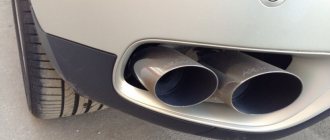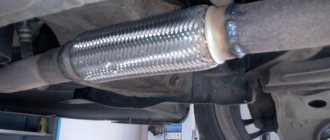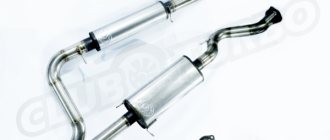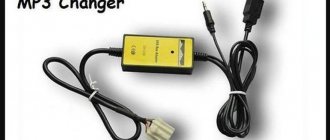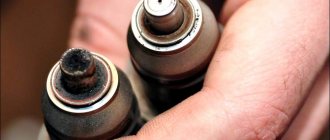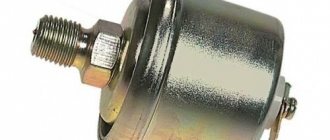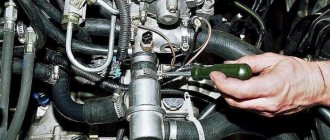Date of publication: September 19, 2020. Category: Automotive equipment.
If a flame bursts out of the exhaust pipe of a car driving nearby, then there are two options for why this is happening: the vehicle is faulty and needs to be abandoned urgently, or the car enthusiast has seen enough films with beautiful cars and decided to become the owner of a “high-power racing unit.” The second option is much more common. The desire to attract the attention of others pushes car owners to create tuning, which is called “dragon language”.
It’s worth saying right away that this is a purely visual effect, which in no way indicates the power and capabilities of the machine. This is just a spectacle, lasting a few seconds and nothing more. To be completely honest, such tuning not only does not bring any benefit, but also completely harms the car and can be extremely dangerous for the life of the driver himself. But, if the desire to get a “tongue” of flame is irresistible, then you need to do everything correctly and understand all the intricacies of recreating such styling.
How it works
The standard ignition system consists of several cylinders, the same number of spark plugs, a switch, coils, etc. During engine operation, the fuel-air mixture is directed into the combustion chamber of the power unit installed under the hood, ignites and sets the engine piston in motion. In this case, all exhaust gases are sent to the exhaust manifold, “travel” a little along the highways and ultimately exit through the resonator and the exhaust system itself. Thus, the air-fuel mixture burns almost completely long before it gets directly into the muffler itself. Therefore, no matter how much you press the gas pedal, there will be no flame.
To create the condition for obtaining the “dragon tongue”, you need to make some changes. First of all, it is necessary to ensure that part of the fuel burns not in the cylinder, but in the exhaust pipe. The second task is to set it on fire at the exit from the muffler. To organize such operation of the system, you can use an additional spark plug (similar to the spark plugs of a motor) and devices that will help control the fire supply process.
Healthy! If the car does not have direct flow, then you can install a nozzle to supply a small amount of the fuel mixture.
If the ignition in several cylinders of the combustion chamber is turned off (two spark plugs are turned out and plugs are put in their place), then the existing devices will prevent the engine from stopping completely, but part of the fuel-air mixture will go “to the exhaust”. However, before you start “modernizing” a car, you need to decide that such styling is possible for a particular vehicle.
DIY fire from a muffler
In this article we will talk about how to make flames from a muffler or dragon tongues with your own hands.
Most car shows don't go by without exclusive tuning and fire shows. That’s when “charged” cars appear with tongues of flame erupting from the muffler. Purely technically, the implementation of dragon tongues is very simple; unburnt fuel is ignited at the outlet of the exhaust system. But we must not forget that any action with flammable liquids can lead to dire consequences, and so it is here. rupture of the exhaust system, ignition near objects, and so on is possible.
Let's remember about tuning! First of all, this is a method of modifying something in order to improve its characteristics. Flames from the muffler will not add power to your car or improve any engine characteristics, so this is styling, but styling is one of the sections of tuning.
Many have seen this with an incorrectly adjusted ignition, when the engine begins to “sneeze” while emitting fire from the muffler, with such exhaust they will not understand you))) In order to achieve the release of flame from the muffler, you need to install a special device that you can assemble with your own hands. Its main task is to ignite the fuel mixture at the exhaust outlet.
On stock cars, gasoline emissions can be achieved in several ways:
- When the engine has de-accelerated, turn off the ignition key and give gas. Since there will be no flashes in the cylinder block, the fuel mixture is released into the exhaust system, reaching the exhaust pipe of the last resonator and is ignited by our device. To prevent the engine from stalling, when the speed decreases, turn on the ignition key and the engine continues to operate.
- One or two spark plugs are unscrewed and plugs are screwed into their places so that gasoline does not end up under the hood. When we start the car, we degas, and gasoline from two cylinders enters the exhaust system. By the way, it is better to turn off the cylinders in which the TDC is different, in one it is lower, and in the other it is upper - this way we will achieve stable operation of the engine.
We know how to put fuel into the exhaust, but how to ignite it, it’s not complicated! A wire is run from the standard ignition coil to the rear of the car, where another ignition coil is connected to it. In the exhaust system, a hole is drilled in the last pipe (after the resonator, 10 cm before the end), a spark plug bushing is placed (they can be bought in motorcycle stores) for cold welding, on Poxypol, or a nut is welded under the spark plug. The spark plug is screwed in and the spark plug cap coming from the installed ignition coil is put on.
But driving with such a system, especially one that is always on, is very inconvenient, much less safe, so a break is established in the wire running from the standard ignition coil to the newly installed coil, wires are connected from them to the switch in the cabin, which will ensure control of the eruption fire from the muffler.
I also want to say that the second method of obtaining fuel is also not convenient, since you have to unscrew the spark plugs before the show and screw them back in after.
For safety reasons, do not put a lot of fuel into the exhaust, it can cause an explosion!
If you are not familiar with electrics and are not familiar with the car, you can buy a ready-made flame unit, but it will also have to be installed by a knowledgeable person.
Installing flames from the muffler is suitable for both carburetor and injection engines, BUT UNFORTUNATELY NOT POSSIBLE ON DIESEL ENGINES.
But here are the safety measures that the manufacturers of the finished “Fire Dragon” system write: “the installation is designed to simulate the exhaust of a racing car and can only be used for demonstration purposes in the open air with the car stationary. Do not use the operating mode for more than 2-3 seconds, as this can lead to serious damage to the engine and exhaust system. Do not use in close proximity to any objects, people, vehicles, etc. The use of the unit on public roads is prohibited. PROSPORT company does not bear any responsibility for the incorrect use of this installation, for damage caused to property, health, or the environment caused by the operation of the installation on public roads.”
The author of the article also does not bear responsibility for the incorrect use of this installation, for damage caused to property, health, or the environment caused by the operation of the installation on public roads and joins the precautionary measures.
If you nevertheless purchased the “Fire Dragon” system, we strongly recommend that you read the instructions below and strictly follow the instructions.
Connection. 1. Disconnect the battery. 2. Connect the black wire of the control unit to ground (brown wire in the standard electrical wiring of the car). 3. The red wire is connected to the ignition switch in such a way that voltage is supplied to it when the ignition is on. The power button is mounted inside the car. 4. The wire going to the standard ignition coil is cut. The white wire of the device control unit is connected to the end of the wire going to the coil. The yellow wire of the device control unit is connected to the second end of the wire. 5. The green wire is connected to the positive contact of the ignition coil included in the kit with the device. 6. The negative contact of this ignition coil is attached to the car body. 7. A nut is welded 10 cm from the end of the exhaust pipe, and the spark plug included in the delivery kit is screwed into it. Place the ignition coil close to the welded spark plug base. Arrange everything so that the high-voltage wire does not touch the exhaust system parts. 8. Connect the high-voltage wire to the ignition coil and spark plug.
Turn on the device. 1. Start and warm up the engine. 2. By pressing the gas pedal, increase the engine speed to approximately 3500 rpm. Maintain these speeds steadily for 1-2 seconds. The tachometer needle should remain stationary at the selected speed. 3. Press the start button for 2 seconds, then release the clutch and drive off.
What cars is it suitable for?
First of all, owners of diesel cars will have to forget about this idea. In such systems it is simply impossible to create the necessary condition. In diesel engines, the combustible mixture ignites under the influence of compression, while the “dragon tongue” requires forced ignition.
You also need to be careful for those whose cars are equipped with additional filters, partitions, neutralizers and other additions that manufacturers install in order to prevent air pollution. By and large, the “dragon tongue” is easiest to install on a direct-flow exhaust system.
If the car meets these requirements, then you need to make sure that its fuel and exhaust systems are in order, and that the power supply is not disrupted and is working correctly. Only in this case can you proceed to installation of the system.
Conclusion
The effect, also called the dragon's tongue, which consists of the appearance of a flame behind the car, is decorative and is suitable for demonstration at all kinds of shows or festivals and other festive events. A similar phenomenon occurs due to incomplete combustion of gasoline in the engine cylinders and its subsequent ignition in the exhaust system. As an entertainment effect, this is quite acceptable if certain safety requirements are met, but you should not get too carried away with it. Its prolonged and frequent demonstration can lead to damage to the engine and the vehicle as a whole. » alt=»»>
Installing the "dragon language"
To get a spectacular flame you need:
- Disconnect the car battery so as not to receive a strong current discharge during operation.
- Insert a candle into the exhaust pipe, at a distance of 10-15 cm from the “can.” In order for it to fit properly, you can weld it to the nut (or use simpler cold welding). If the flame ignites too close to the outlet, the “stunning effect” will not work. But if the candle is mounted before expansion (in a pipe with a diameter of about 50 mm), then the “dragon tongue” should be larger. In this case, the additional element does not have to be mounted from below; it can also be placed on the side.
Important! It is not safe to install the candle too deep.
- Install an ignition coil (the same as on the engine) next to the new spark plug. Additionally, it must be connected to a switch and a pulse generator. There will be two wires “+” and “-” coming from the structure, which need to be connected to the battery.
- Place the high-voltage wire coming from the coil onto the spark plug installed in the pipe.
- Bring a toggle switch into the salon. When you press one of its positions, the circuit will break, and the spark will go forward. The other position will be responsible for the standard supply of spark to the engine spark plugs. The flame should fly out only when the driver wants it, and not on its own.
Healthy! If the exhaust system is not direct-flow, but standard, then after the resonator you need to install an additional nozzle to supply the fuel mixture, which is connected to the gasoline pump. But then you will have to think over a valve that will shut off the fuel supply.
It is worth considering that great attention should be paid to wiring. Even “experienced” drivers do not always manage to make the correct connection. In this case, you can purchase a ready-made kit for creating a flame. As a rule, such products are accompanied by detailed color instructions, so they are much easier to install.
But, regardless of whether the “dragon tongue” is purchased or homemade, you need to know the intricacies of its use.
A clear and simple scheme for achieving the “dragon tongue” effect
Getting fire to come out of your car's muffler is quite simple. When all automotive systems operate properly, the exhaust gas cools as it passes through the exhaust system. Therefore, the fire simply has nowhere to appear. This can be corrected by installing a special spark plug in the final segment of the exhaust system (in the muffler), which will ignite the unburnt part of the fuel.
For a spark to appear, the spark plug must be connected to a generator that creates impulses. First you need to turn off the candles. This will ensure that not the entire volume of gasoline is burned in the cylinders. Some of the unspent fuel will end up in the exhaust pipe. Then the pulse generator is activated, which will produce a spark to the additionally mounted spark plug. Everything is ready: the flames are bursting out.
When using the manual feeding method, it is necessary to control the amount of remaining gasoline. Large amounts of unburnt fuel may cause an explosion.
Safety Precautions and Cautions
First of all, you need to understand that self-installation of the “dragon tongue” is a change to the standard design of the vehicle. According to the letter of the law, this is only possible if the modification has been registered with the traffic police and does not violate the safe operation of the car. Of course, a flame from the muffler can only be attributed to changes that go along with malfunctions. Therefore, if you stage a “show” on the roadway and generally move around with flames coming from the exhaust pipe, you can “get” a fine.
Healthy! The use of straight-through mufflers (even without a flame) does not comply with environmental regulations.
Such demonstrations can only be held at special sites. In this case, the car must be at a sufficiently large distance from people and other objects that may catch fire. No turns can be performed. If something goes wrong, the driver must quickly leave the car. Therefore, it’s a good idea to have a fire extinguisher nearby.
It is also worth paying attention to the danger that such a system poses to the operation of the vehicle itself:
- If you do the installation yourself, there is a risk of damaging the exhaust system.
- If you do not limit the amount of gasoline supplied into the direct flow, the “spouting” of fire can result in an explosion.
- If a simple homemade system is installed on a car, this will lead to rapid wear and tear of the entire vehicle. Therefore, it is better to install fuses or even use a ready-made electronic system.
- If you turn on the flame often and for a long time, this will create increased thermal loads not only on the exhaust system itself, but also on other components.
- It is not always possible to control the escaping flames, the tongues of which can reach up to half a meter. In this case, there is a high risk of damaging the car's paintwork.
- If you turn on the “dragon tongue” for more than 3 seconds, there is a risk of serious damage to the power unit.
How to make a flame from a muffler
From the above description of the reasons why fire occurs from a muffler, it should be clear that anyone can do this with their own hands. In fact, the task is divided into two stages - to ensure incomplete combustion of the fuel, and then burn its remains at the outlet of the exhaust system, which will allow a flame to be generated from the muffler.
The first problem can be solved in various ways:
- It is necessary to spin up the engine, turn off the ignition and give gas. An open throttle valve will ensure the flow of gasoline into the cylinders, and since If there is no spark, then unburnt gasoline will go into the exhaust system.
- Instead of one or two spark plugs, plugs are installed, then when the engine is running, especially at high speeds, there will be more than enough fuel at the outlet of the muffler.
This plug connects to an additional standard bobbin that is not connected to the existing ignition system. The coil must be independent and turned on with a separate button. When it is pressed, fire comes out of the muffler.
Where is it used?
As mentioned earlier, most often such a pyrotechnic show is used during various automoto shows, car festivals and car enthusiasts' gatherings. In some cases, a similar effect is also used in circus performances.
Video: flame from the muffler
It is not often seen in everyday life. Firstly, the vehicle must be specially converted for these purposes. Secondly, this is not entirely dangerous and can only be done with a full list of safety measures. And finally, thirdly, the increased thermal load more sharply reduces the service life of the exhaust pipe and other elements that are connected to it.
Physics of the process
Now we will try to answer the question: “How to make a flame from a muffler?” The basis of any such special effect is the combustion process. For its physical implementation, 3 components are required:
- Availability of the required amount of oxygen
- Availability of fuel
- Presence of ignition source
There are no problems with the first point. In the earth's atmosphere, oxygen is always present in the required concentration (about 21 percent). This is quite enough to maintain the combustion process.
With the appearance of fuel in the exhaust pipe, minor problems appear. They can be solved with minor design changes in the design of the vehicle's propulsion unit.
This spectacle will attract a lot of attention
Another important nuance is the distribution of fuel over the surface of the pipe. The larger the surface area it occupies, the better the result. This problem is solved in conjunction with the first one by changing the design of the internal combustion engine.
The last, third point requires serious changes in the engine design. It is necessary to introduce elements into the design of the car that were not there before. This is an additional spark plug and a high-voltage transformer. These two devices in tandem create a spark in the exhaust pipe and lead to a sudden ignition of the fuel.
Some useful theory
After fuel enters the combustion chamber, the ignition process occurs, the piston performs a power stroke, after which the combustion products go into the exhaust manifold, bypass the resonator and are thrown out through the exhaust pipe. For a flame to appear from the muffler, a small portion of the fuel must be unprocessed and untouched.
Together with the products of fuel combustion, it reaches the outlet of the exhaust pipe, where all that remains is to take care of the ignition process. The result is a bright and spectacular fire from the exhaust pipe.
additional information
For those who are not quite comfortable with electronics, but want to get a monster that spews fire, kits are sold that contain all the necessary components and allow you to create a dragon that spews fire with your own hands. It should be noted that this effect is only possible on carburetor cars.
In addition, when you are ready to receive fire from the suppressor at will, you need to keep safety precautions in mind. One of the very first is the limitation on the amount of gasoline entering the exhaust system. Do not overuse this, as a large amount can lead to an explosion.
The duration of the fire should not exceed three seconds, otherwise this mode may cause damage to the vehicle. Demonstration of such an effect is allowed only in an open area, free of people, and away from any objects. In addition, the vehicle spewing flames must be stationary. Demonstration of such an effect while driving, as well as on roads, is prohibited.
And most importantly, you can get a dragon tongue only on a direct-flow exhaust system, i.e. your car must be equipped with a straight-through muffler. Otherwise, partitions and neutralizers simply will not allow you to achieve the desired effect.
The general installation procedure looks like this:
- the battery is turned off;
- at a distance of approximately 10 cm from the edge of the direct-flow muffler, a threaded nut is welded under the spark plug;
- an ignition coil is attached to the bottom of the car in close proximity to the spark plug;
- A power button and a control unit with a fuse are installed in the cabin.
It is very important to connect the wiring correctly. Most manufacturers adhere to the color of the wires. The set will definitely contain wires of different colors. The connection diagram will also be made in color.
- connect the black wire from the control unit to ground;
- connect the red wire to the ignition switch in such a way that when turned on, voltage is supplied to it;
- yellow and white wires go to the ignition coil;
- green to 12V coil wire;
- the negative contact of the coil is connected to ground;
- the high-voltage wire is connected to the spark plug.
Read more: Installation of daytime running lights - traffic rules and GOST
Technical implementation
Gasoline can be supplied to the exhaust pipe in 2 ways:
- When the engine is running at high speeds, suddenly turn off the ignition and at the same time increase the gas supply. In this case, the fuel will not burn in the internal combustion engine cylinders and will directly enter the exhaust gas system.
- The second option involves changing the design of the vehicle engine. To ensure that not all of the gasoline is burned, one or two spark plugs are unscrewed and pre-prepared plugs are installed in their place. Next, turn on the internal combustion engine and increase the gas. As a result, part of the fuel, bypassing combustion in the working cylinders, enters the exhaust pipe.
An additional spark plug will be installed in the muffler
To complete this special effect, you must fire a spark at the muffler. To do this, it provides space for installing an additional spark plug. Next to it there is a mount for a high-voltage transformer (also called an ignition coil). These elements are connected using a special PVV type wire (high voltage wire).
The most difficult part in this circuit is connecting an additional transformer to the vehicle's electrical circuit. Before laying the wire, you must disconnect the battery for safety reasons.
Then, this requires additional tightening of three wires. The cross-section of these connecting elements must be the same as those that go to the installed transformer. One wire goes from the regular ignition coil to the additional terminal. The second one should fit the car dashboard. And the third one is to connect the new transformer to the dashboard.
At the next step, a toggle switch is installed on it and pre-prepared wires are connected to it. After which the electrical circuit is ready. Now, after a certain amount of gasoline has accumulated in the exhaust pipe, it is enough to turn on the toggle switch briefly (no more than 3 seconds) and get flames in the appropriate place.
You can't do without additional equipment
As can be seen from everything said earlier, it is quite possible to make a flame from a muffler with your own hands. The necessary parts can be purchased at any auto store. And doing this work with connection is not particularly difficult. Also, no special tools are needed for this.
